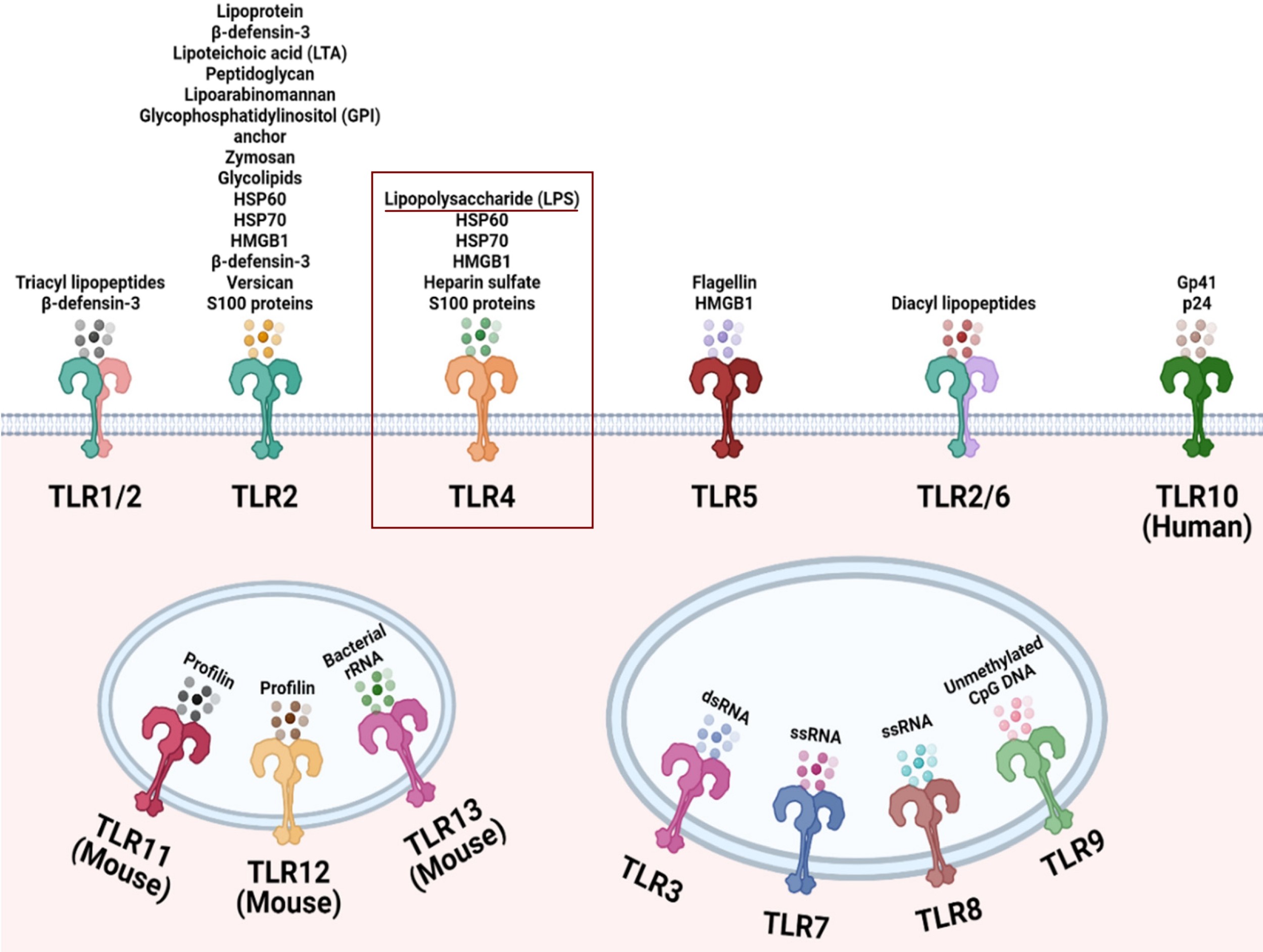@yogthos SARS-CoV-2 is such an interesting virus with all the different systems it can effect. Too bad about all that suffering it's causing.
Science
Subscribe to see new publications and popular science coverage of current research on your homepage
indeed
This is wild, TLR4 is associated with our immune system's identification of LPS, which is found in the outer layer of gram-negative bacterial cells. So why it's associated with the SARS-CoV-2 virus is mind-bending. For anyone interested in the TLR's found in the immune system, here you go:

It's well-known NF-kB is directly associated with NOD-Like-Receptors, which produces inflammation as an inflammasome. This is what allows immune cells to target the area in numbers. But the TLR4 involvement here is puzzling, would have 100% bet against its involvement in the immune response to SARS-CoV-2!
Edit: For clarity, S100 proteins are only found in vertebrates, and Heparan Sulfate is expressed by mammals on cell surfaces and in the surrounding extracellular matrix. HMGB1 works as a chromatin binding factor in our bodies. HSP60 + HSP70 (known as Heat Shock Proteins) are found in both prokaryotes and eukaryotes and are a response to stressful conditions. They're basically chaperones and help control protein folding, transport, degradation, cell differentiation, and translocation. But viruses aren't prokaryotes, so the HSPs they're using during an infection are from the host. This helps show why I'm soo blown away with TLR4 being involved here!!